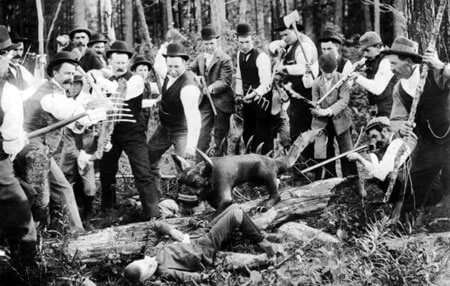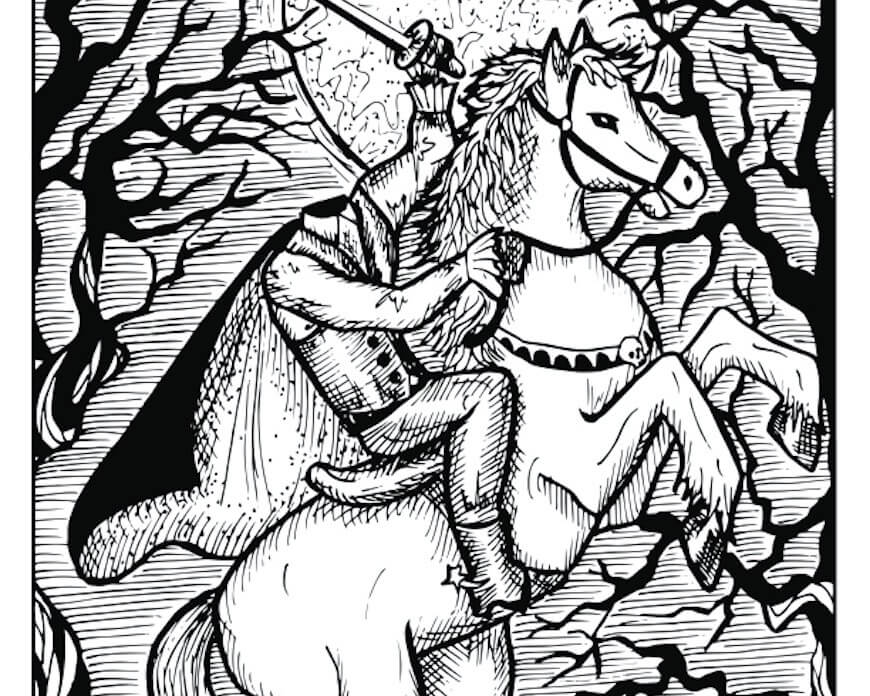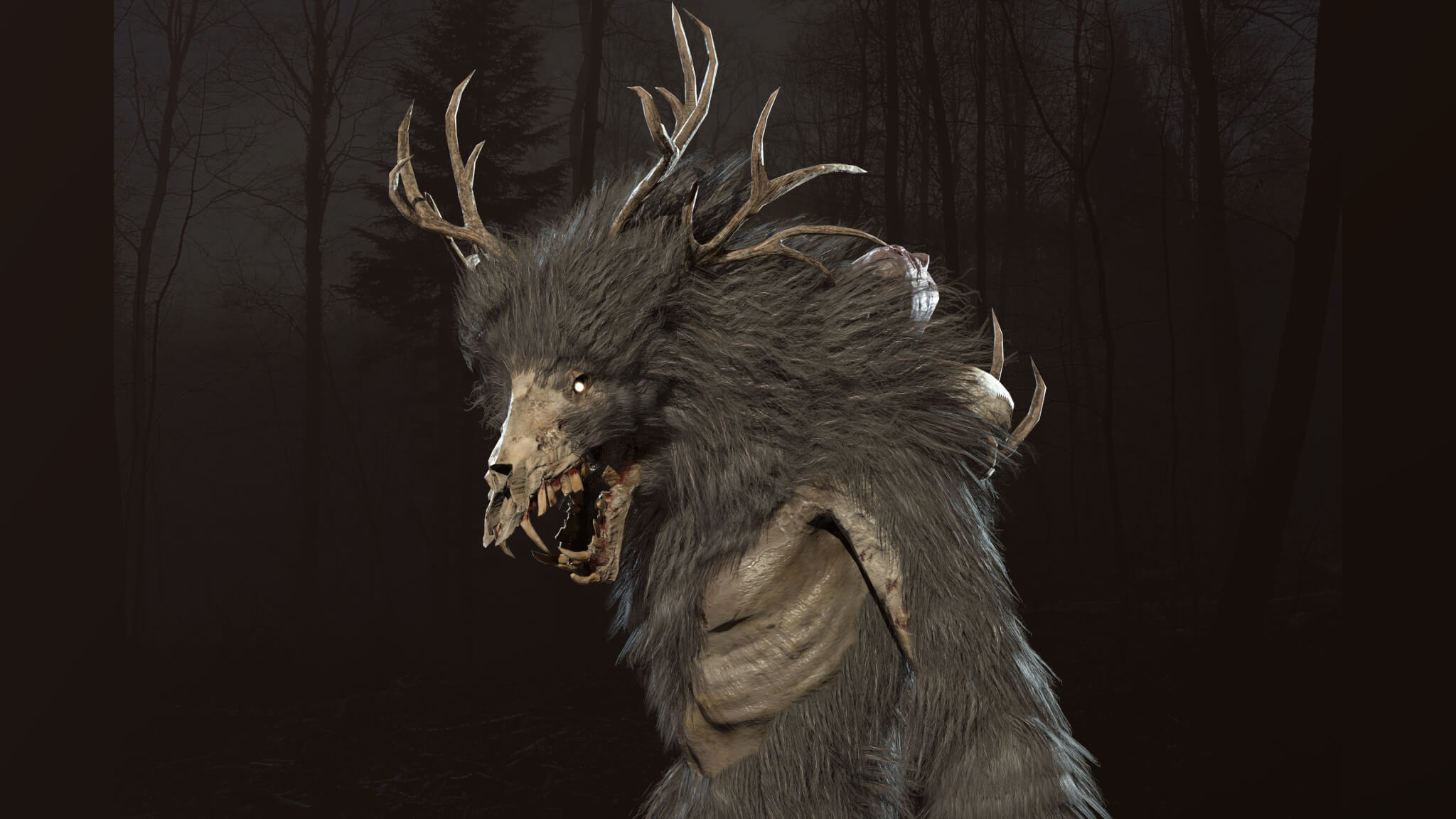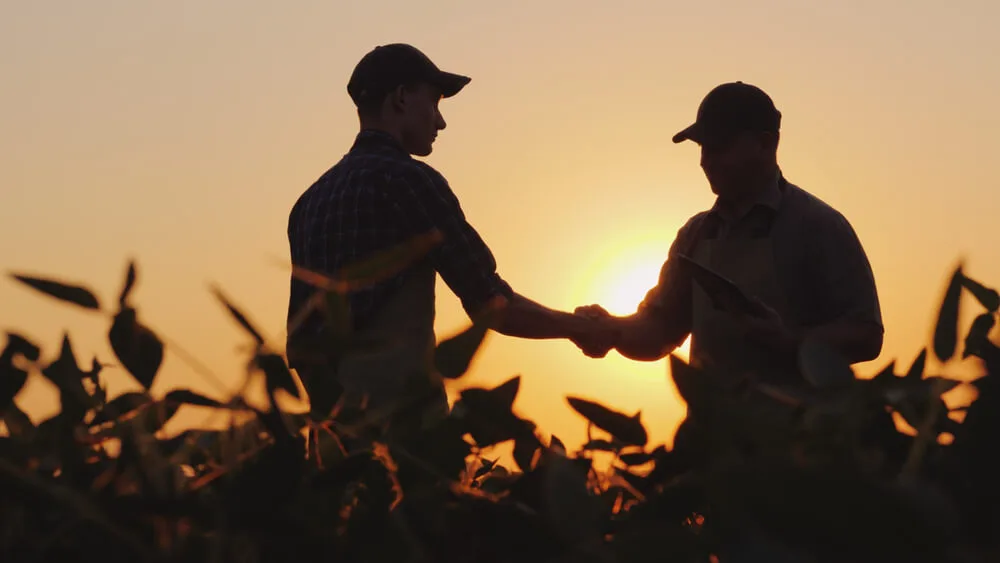
#image_title
Here are a few spooky tales to tell around the campfire before the snow flies.
The Ridgeway Ghost Has Scared Travelers Since the Lead Rush
There’s been a ghost reported along the old road in southwestern Wisconsin since the pioneer days of the early 1840s. At that time, lead miners were pouring into the region following a trail that the Indians used to take from Central Wisconsin to the Mississippi River. That trail later became what today is referred to as the Old Military Road. Today it encompasses parts of state Highway 55, Highway 151, state highways 68 and 33 and Highway 18.
An oxen trip from Milwaukee to Galena, Illinois, took five days back then, and along the road, saloons and inns sprang up to feed and shelter the miners, and to separate them from their earnings. The Ridgeway Ghost story begins at Sampson’s Saloon in Ridgeway, where a peddler is said to have stopped in for a drink and was never seen again. His saddled and bridled horse returned to the saloon without a rider. Travelers along this misty stretch of highway would report seeing lights and a strange lone figure patrolling the road. Others saw a headless horseman, riding backwards on his horse.
The Highway 18/151 bypass around Ridgeway long had a view down a valley to a dilapidated house that was rumored to be the home of the ghost. The house has since collapsed, but the legend lives on.

The Beast of Bray Road Prowls Walworth County Eating Flesh
The Beast of Bray Road, a hairy man wolf that walks erect, is rumored to have been first spotted on Bray Road near Elkhorn in the 1930s. People have reported seeing the beast scavenging along the roads in Walworth County and neighboring Jefferson and Racine counties.
In the 1980s, several people reported that the beast attacked their cars and trucks, leaving long scratch marks. The beast is purported to run on all fours while chasing deer, but can also stand on its hind legs and kneel like a human. It has allegedly been seen eating dead animals alongside the road, most recently in 2020.
Earlier this month, researchers of the paranormal came together to “celebrate Wisconsin’s favorite cryptid” at a Beast of Bray Road Conference held at Lutherdale Camp, not far from Bray Road.
RELATED: Scare Yourself Senseless at These Haunted Wisconsin Attractions
Hodag Grows From Lumberjack Lore to Rhinelander Mascot
When lumberjacks gathered around the fire, they loved to tell tales of the creatures of the North Woods, and the most ferocious, they agreed, was the hodag. Anthropologists have found hodag tales as early as 1870, originating in lumber camps.
But Wisconsin’s most famous hodag was born in 1893 in Rhinelander. There, lumberman Eugene Shepard wrote in the local newspaper, The New North, that he had personally captured a hodag and he drew an illustration of a bull-horned carnivore, with thick, curving spikes down its back. More stories followed, each adding to the lore of the fearsome hodag. Shepard reported that it had “the head of a frog, the grinning face of a giant elephant, thick short legs set off by huge claws, the back of a dinosaur, and a long tail with spears at the end.”
In 1896, to draw people to the Oneida County Fair, Shepard said he would exhibit a live hodag. Many people paid to see the beast, which was displayed in a shadowy stall and emitted frightening noises. Newspapers as far away as Philadelphia reported on this amazing scientific discovery.
After scientists from the Smithsonian Institution announced they were coming to town to investigate, Shepard admitted the hodag was a hoax. But people still wanted to see his invention and it was exhibited for years until it was destroyed by fire. By then, the hodag was so much a part of Rhinelander culture that the city is known as “The Home of the Hodag,” and boasts a Hodag Country Festival, several hodag statues and has a hodag as the mascot of the high school teams.

The Wendigo Haunts the North During times of Cold and Starvation
A much older phantom of the North Woods is found in Wendigo, an evil supernatural creature that is part of Ojibwe lore. The evil being is associated with winter and starvation, and appears to feast on humans. The Wendigo has been described as a giant with a heart of ice, recessed eye holes and a lipless maw for a mouth. It is said to appear after people resort to cannibalism, and sometimes captures people and turns them into Wendigos who then hunt down their former loved ones to feast on their flesh.
A recent episode of In Search of Monsters on the Travel Channel interviewed people who spotted a Wendigo at a lakeside camp near Spooner. The show also featured Wendigo sightings near Rice Lake and Trego.

New Biden rules deliver automatic cash refunds for canceled flights, ban surprise fees
In the aftermath of a canceled or delayed flight, there’s nothing less appealing than spending hours on the phone waiting to speak with an airline...

One year on the Wienermobile: The life of a Wisconsin hotdogger
20,000+ miles. 16 states. 40+ cities. 12 months. Hotdogger Samantha Benish has been hard at work since graduating from the University of...

Biden makes 4 million more workers eligible for overtime pay
The Biden administration announced a new rule Tuesday to expand overtime pay for around 4 million lower-paid salaried employees nationwide. The...

‘Radical’ Republican proposals threaten bipartisan farm bill, USDA Secretary says
In an appearance before the North American Agricultural Journalists last week, United States Department of Agriculture (USDA) Secretary Tom Vilsack...




